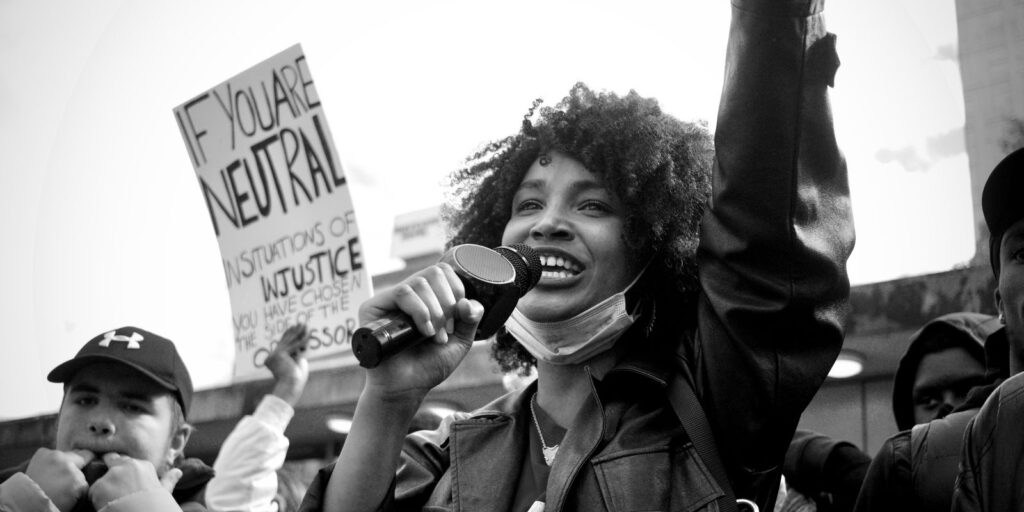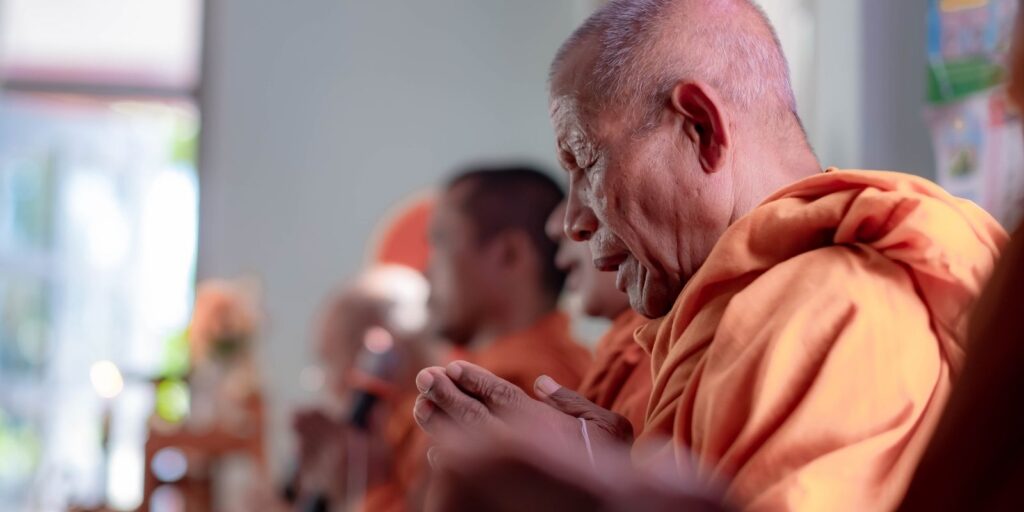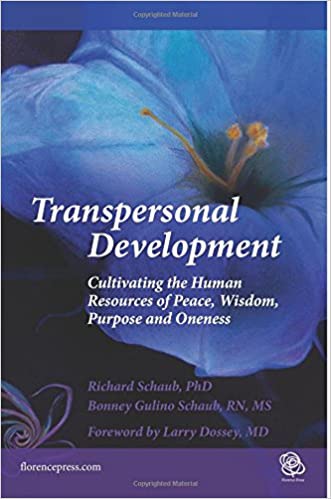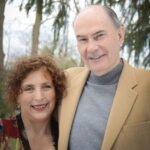Transpersonal simply means beyond the personality.
People go beyond their normal personality patterns under many circumstances. If they become threatened, they abandon their normal patterns and go into instinctual survival mode. They either become aggressive (fight) or escapist (flight/freeze). In such a state of reactivity, their ordinary selves are not available – they don’t think normally, they don’t act normally. Sometimes, their reactions in the instinctual survival mode are extreme and cause lifelong damage to themselves or others. This is especially true in the aggressive (fight) reaction. The damage can be in the form of accusations, manipulations, and threats in a relationship or actual physical attack and harm: how many car accidents are the result of “road rage”? If you have been in a full-blown rage yourself or if you have seen someone in a rage, you have witnessed temporary insanity.
Fortunately, like a dark storm, the rage passes, but the consequences and karma of what you have done do not pass. Having worked with hundreds of people in psychotherapy, I have heard many stories of single incidents changing lives forever.
At the entirely other end of the spectrum of going beyond your personality, you can also enter non-ordinary states of deep serenity, wisdom, and loving oneness with all of life. This wild and wide dichotomy in our nature has been noted by many thinkers and artists. As only one example, the Canadian rock singer Bruce Cockburn brilliantly describes the human dichotomy in a song called The Burden of the Angel Beast. It should be played in every psychological, meditative, spiritual, and philosophical program as a source for study.
We know the bottom-line of why people go beyond their personality into the instinctual survival mode: feeling threatened. Is there a bottom line of why people go beyond their personality into spiritual-transpersonal states? The answer is complex because, sometimes, people spontaneously with no apparent effort or method go into a spiritual-transpersonal state of consciousness. The fact that this happens spontaneously leads to the conclusion that the state already exists in the person in dormancy. They did nothing to make it happen because it was already there.
A Spontaneous Experience
A tired business executive went out into his suburban backyard at night and looked up at the stars. He suddenly felt an “energy” come down into him, and he went into a state of blissful oneness. He felt connected and in love with everything. In the words of the brain researchers Newberg and D’Aquili, he was having a taste of absolute unitary being. In the yogic tradition, the Sanskrit term is satchitananda, describing a unitive state of being/knowledge/bliss (sat=being, chit=knowledge, ananda=bliss).
The feeling lasted perhaps a minute and then began to fade, but an afterglow was still with him when he went back into the house. He told his wife about the experience, she called it weird, and they said no more about it.
Three years later, attending a seminar on meditation, he approached me after class and described his backyard experience. I was the second person he’d ever told. For three years, the man had lived in silence with an experience that he described as other than the birth of my kids, it was the most important thing that’s ever happened to me.
He wondered if he could have it again.
The 8 Paths
The question is how to have it for yourself. The desirability of serenity/wisdom/loving oneness has led people of every time and culture to find ways to wake up this natural state out of its dormancy. Different traditions offer different versions of the eight paths to spiritual-transpersonal experience.
Here is our summary:
- The Path of the Arts and Beauty
- The Path of Social Action and Justice
- The Path of Service
- The Path of Meditation
- The Path of Physical Training and the Senses
- The Path of Ceremony and Ritual
- The Path of Study and Knowledge
- The Path of Devotion and Prayer
Each of these has many versions and practices. As you go through this list, wonder which path (s) you might be on or were once on. It is not unusual to try different forms of different paths until you find your way, i.e., the path that has the potential to awaken your spiritual-transpersonal nature.
Learn More About the Paths to Transpersonal Development
These paths are discussed in detail in our book, Transpersonal Development: Cultivating the Human Resources of Peace, Wisdom, Purpose, and Oneness. This book offers you the principles and step-by-step techniques of transpersonal practice backed up by numerous case studies from over three decades of field work, as well as the latest scientific research.
1. The Path of the Arts and Beauty

One way to think of artistic inspiration is that artists align with some essential insight or truth about the universe and express it through their art. The famous music conductor Leonard Bernstein wrote this about his experience leading an orchestra:
…it takes minutes before I know where I am – in what hall, in what country, or who I am. Suddenly, I become aware that there is clapping, that I must bow. It’s very difficult. But marvelous. A sort of ecstasy… that is nothing more and nothing less than a loss of ego. You don’t exist.
Think about times when this has happened to you. Perhaps you were at a concert, or watching a sunset, or rapt in the beauty of a campfire, or at the magnificence of a newborn child. You experience awe and the awakening of a new awareness, something beyond your usual experience of yourself.
The world’s spiritual traditions certainly recognize the power of this path. The art of the world, the greatest architecture, paintings, frescoes, sculptures, music, and poetry have all been created for and inspired by recognition of the universal.
2. The Path of Social Action and Justice

World-changing leaders such as Gandhi and Martin Luther King very directly drew strength from their spiritual selves. Martin Luther King spoke of “the love of God operating in the human heart.”
The path of social action is a path of compassion and courage. You go beyond your instinctual survival fears and your social desire to be approved of and instead stand up for fair treatment of others. The social action path is about acting bravely in the world while staying connected to meaning and a higher purpose out beyond your own self-interest.
3. The Path of Service

Unlike the path of social action, which is service on a large scale, the path of service can be simply directed toward one other person – your child, your patient, your student, your sponsee, your friend.
The path of service is contributing to the lives of others. In doing so, you experience freedom from the fears and tensions of your separate self and instead experience an inner generation of love toward others. The ancient wisdom, “Give and you will receive,” speaks to the positive benefits that flow to you from helping others, and the latest research on the brain suggests that “social intelligence,” the ability to connect to others, is hard-wired in our system and brings us physical and emotional benefits when we activate it through empathic service.
Spiritual traditions have different names for service. In Judaism, it is called a mitzvah. In yogic philosophy, it is karma yoga. In Catholicism, there are religious orders devoted to nursing, medicine, and teaching.
4. The Path of Meditation

After his first heart attack, John, a 58 year old teacher, needed follow-up for treatment of his coronary artery disease. He decided to try the approach of cardiologist Dean Ornish. Ornish’s patients have been able to reverse coronary arterial clogging, to reduce or discontinue medication, to reduce or end chest pain, to lose weight while eating more, and to feel more energetic and calm. All of this is accomplished without surgery or medication. It is accomplished through the alternative health practices of stress management (meditation, imagery, hatha yoga), diet, exercise, stopping smoking and other addictions.
After trying the Ornish approach for a week, John gave up. He could not comply with all the lifestyle changes. In frustration, he called Ornish on the telephone and asked him to recommend only the single most important practice in the approach. Dr. Ornish immediately told John, “Meditate.”
John was surprised. He thought surely that diet or exercise would be the priority. John asked Ornish why mediation was the key practice. In response, he was told that meditation counteracts some of the pounding the body takes from a worried mind.
The path of meditation is characterized by discipline and an act of will in which you deliberately set out to expand perceptions and attention. In John’s case, meditation will be an act of retraining his mind to not succumb to worry as the dominant way to perceive reality.
The physical benefits of meditation have been studied and well-documented in the scientific literature for many years. Stress reduction is the most studied effect of meditation because we can quantify reductions in heart rate, blood pressure, muscular tension and stomach acid as evidence of less stress.
In general, meditation techniques can be classified as concentrative, receptive, and creative.
Concentrative meditation emphasizes a single-minded focus on one object – the breath, a phrase, a thought, an image, a repeated movement. In such techniques, the goal is to ignore all other experiences and to keep returning attention to the single meditative object.
Receptive meditation begins with a concentration technique, such as focus on breathing, and then gradually lets awareness open to the stream of experiences, including body sensations, thoughts, feelings, moods, sounds, energy shifts.
This receptive behavior is sometimes called witness consciousness or mindfulness. As only one example of its benefits, the mindfulness meditation teacher, Shinzen Young, who works with people in recovery from addictions, indicates that an important moment takes place in meditation when the person realizes he can simply observe and let go of thoughts or urges that previously caused him to act self-destructively.
Creative meditation brings the vast resource of the imagination into meditative practice. Two religious traditions that greatly utilize the imagination are Roman Catholicism and Tibetan Buddhism. They both utilize art and images extensively to lead the separate self into an identification with qualities of the universal (e.g., Mary as the image of love).
The potential of imagination to expand awareness is also central in the meditation practices of European psychiatrists Carl Jung and Roberto Assagioli.
Any of these paths by themselves or in combination can help to cross the bridge to the universal.
Online Class: Clinical Meditation and Imagery
If you think the Path of Meditation is your gateway to Transpersonal development, you can get started with our Clinical Meditaiton and Imagery course. Using awareness and choice as a foundation, you will learn how to teach your clients, patients, students and colleagues a wide variety of meditation, imagery and energy practices to reduce suffering and increase peace and purpose in their daily lives.
5. The Path of Physical Training and the Senses

Physical activities can lead us to freedom from the separate self, to the feeling of being part of something greater. Athletes and QiGong and yoga practitioners know this experience very well, and people can often experience it while receiving acupuncture or other body treatments. It happens when we let go of strained effort and instead give way into the natural flow of animating life energy and wisdom in the body. An experience of the universal can even occur under the most difficult of medical circumstances, e.g., in our time of dying, when we give up fighting our physical experience and just observe it and surrender to it.
In the yogic tradition, the natural flow of life energy and wisdom is called prana. In Taoism, it is chi, as in the practices of Tai Chi or Chi Kung (QiGong). In modern Western science, it is now being referred to as subtle energy. These are all references to the life force, the vitalizing force of all living beings.
6. The Path of Ceremony and Ritual

Part of the richness of ceremony and ritual is the synergy of a like-minded group of people joining together with shared intention. In formalized ceremonies, elements such as special garments, candles, incense, prayers, music, chanting, pageantry, theater, and dance are utilized to draw our consciousness out beyond the confines of our separate self.
Meaningful spiritual ceremonies and rites of passage are not prevalent in our present culture. If, as children, we were exposed to ceremonies in a mindless and rote way, they can quickly lose their potential. This speaks to the value of creating personally meaningful ceremonies in your day to day life as reminders of the universal.
7. The Path of Study and Knowledge

This path is motivated by the mind’s desire to experience the greater truth of reality. We may think of the scientist and the scholar as people on this path.
Often, such searchers will consider themselves pre-eminently rational and dismiss the spiritual quest as irrational. But the very origin of the Western scientific method is in the work of Francis Bacon who was trying to bring the search for truth into the world. Knowledge expands our mind out farther and farther, to the infinity of the universe, and deeper and deeper down to smaller and smaller particles of existence, and frees us from limited definitions of who we are and what we are part of.
8. The Path of Devotion and Prayer

This path is characterized by surrender, adoration, and worship of the universal. Its premise is that we are too small to know the ultimate answers, but that we can enjoy, even love, the wonders we are part of.
The great Sufi mystic Rumi put it this way: I am so small I can barely be seen. How can this great love be inside me?
Far from the researcher who personally seeks out knowledge, the devotee’s path asks us to give up the search for knowledge and to give in, to surrender to powers greater than us.
The concept of surrender is an inherent aspect of most 12-Step programs. It is not a matter of resignation but rather an empowered awareness that something greater than our separate self is involved in our life and that we need to open to this universal aspect of reality.
One of the main forms of practice in the devotional path is prayer. Dr. Larry Dossey, one of the pioneers of integrative medicine, has been studying and synthesizing experimental research in prayer. His thoughts on the nature of prayer are provocative and offer new possibilities for the devotional path:
The prevailing notion that prayer is asking for something…is woefully incomplete. I want to get away from that common way of looking at prayer. Prayer for me is any psychological act which brings us closer to the transcendent…Prayer may involve words…It can involve silence, nonactivity. It can even be done in the subconscious or when we sleep at night. So I prefer the use the term ‘prayerfulness’ to capture those activities we have traditionally called prayer.
Since the latest neuroscience has become interested in higher states of consciousness, there will likely develop a greater understanding of how the different paths affect our brain. For example, because of its widespread use, prayer has already become such an object of neuroscientific study. The work of leading researchers such as the physicians Larry Dossey, Andrew Newberg and James Austin will open spiritual-transpersonal inquiry to the growing secular population who would not otherwise relate to purely spiritual explanations.
Finding our way on one of the eight paths waits to be discovered by each of us.







